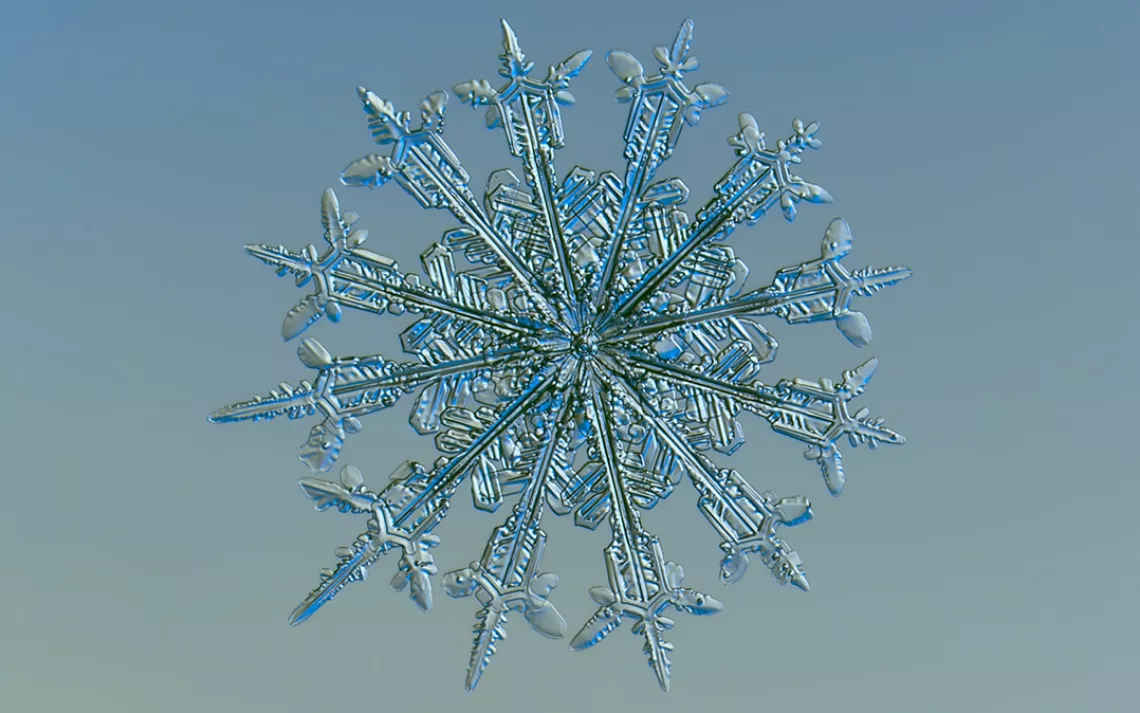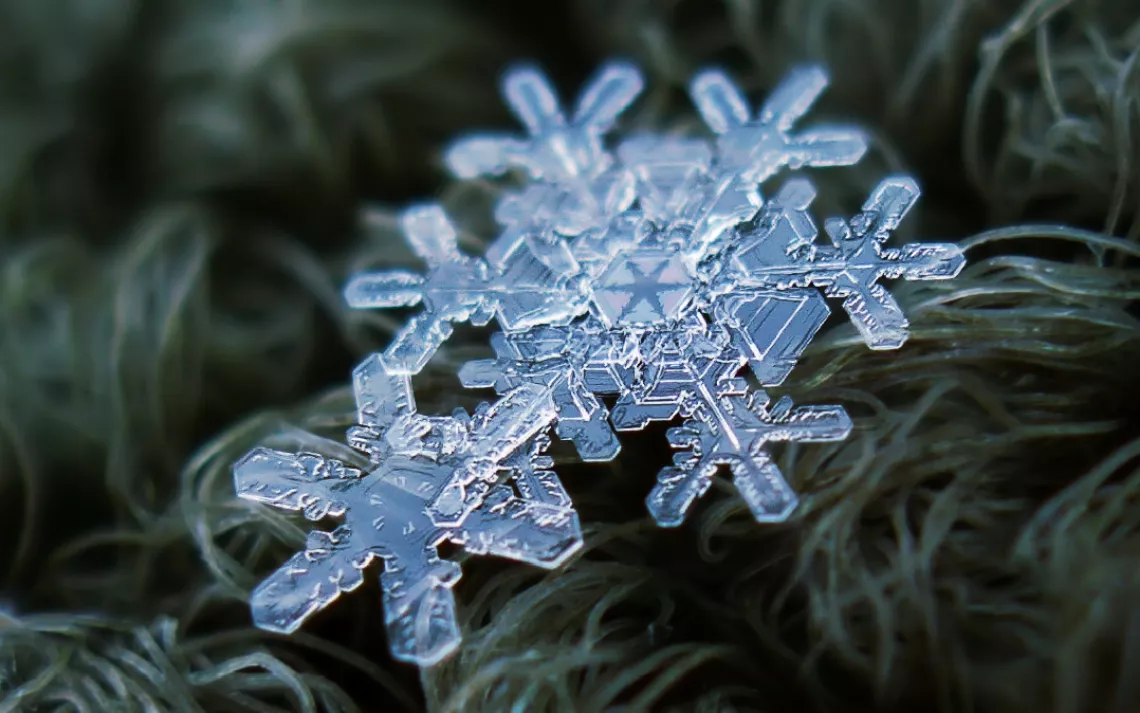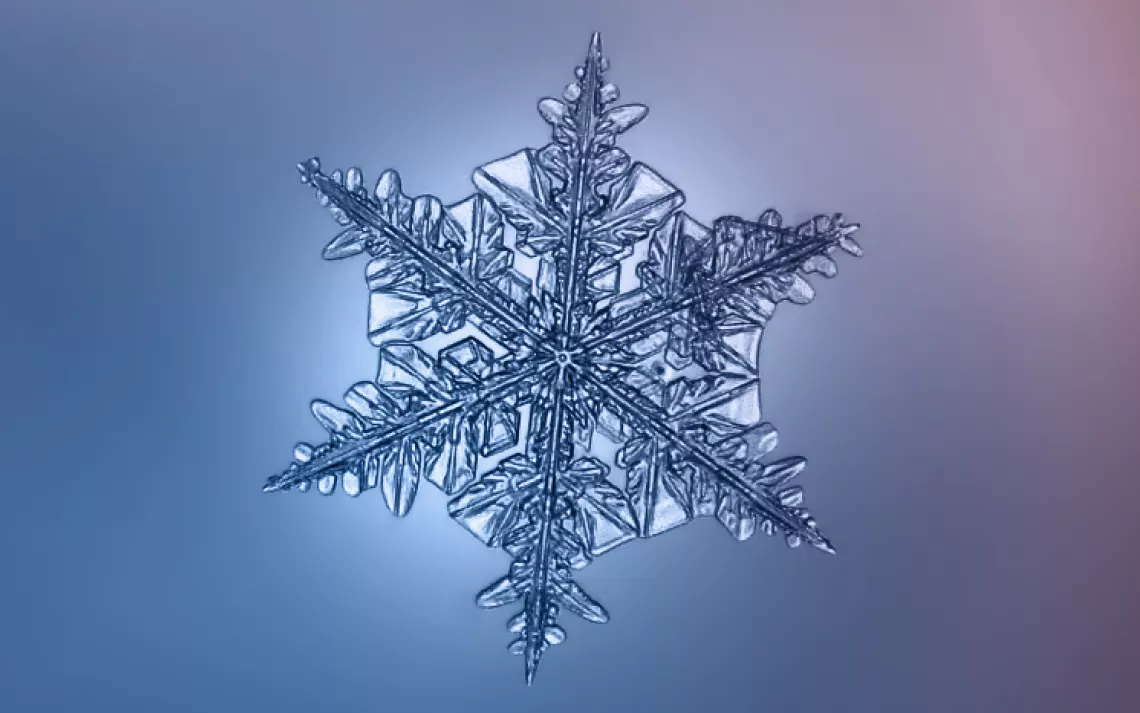Snow Show: Snowflakes Like You've Never Seen Them Before
Photographer Alexey Kljatov gives us a crystal clear look at fluffiest precipitate with a DIY rig and a unique processing technique

As a former Buffalonian, I have seen, and shoveled, a fair share of snow. And while I have always appreciated a winter wonderland landscape in aggregate, it wasn't until I saw Alexey Kljatov's photographs that I realized how exceptionally beautiful that each individual snowflake is. Kljatov, a self-taught photographer who works as a teaching assistant, came up with a fantastic DIY method to capture the snow crystals that fall on his Moscow balcony—essentially using a Canon PowerShot, a plastic bag, some tape, a piece of wood, an overturned stool, and a piece of black fabric. He takes a series of identical shots of each crystal; aligns and averages between 8 to 16 shots to lower the background noise and reveal the subtle details (which "takes not too much time, even on a quite old Pentium 4-class computer," he tells Sierra); and then begins his postprocessing work, where his artistry really shows.

"I prefer to shoot fast and quickly switch to other crystals, not spending too much time on any one snowflake," Kljatov says of his photo sessions, which he's been perfecting for the past six winters. "It's more like hunting than studio work." When asked about his favorite shooting conditions, he says, "Shooting in light snow is more accurate and calm, but I also like the speed of shooting in heavy snow—though I miss a lot of beautiful crytals because they quickly get buried under others."
This photo was taken on a sheet of glass set on an overturned stool. Kljatov holds an LED flashlight in his left hand underneath the glass, searching for interesting crytals. "Often, but not always, beautiful crystals can be seen with the naked eye," he says. "For example, a quite rare snowflake form, the 12-sided crystal, is easy to differentiate from other crystals."
Photo by Alexey Kljatov

The background that Kljatov uses for some of his shots is a dark wool fabric. He experimented with other materials (including colored plastic folders and green carpet) but found that wool's long, thin fibers have many advantages: "The snowflake hangs in the air, touching only a small number of fibers, which prevents quick melting. And the fibers effectively trap the snowflake, so the wind can't blow it away."
Photo by Alexey Kljatov

The hexagonal plate is Kljatov’s favorite type of snow crystal. He tells Sierra: “I like the simplicity of hexagonal plates, when no other details detract viewers’ attention from the internal structure of the crystal. And their internal patterns are sometimes really amazing—rarely seen in the central hexagons of the larger, branch-type snowflakes. Plus, these crystals seem very unusual to those who expect that all snowflakes are stellar dendrites, which are big, common, and easily seen in detail by the naked eye. I like to show the great diversity of snowflake forms and patterns."
Photo by Alexey Kljatov

"The most common snowflake type I see is fernlike stellar dendrite—the biggest of all snowflakes," Kljatov says. "One day, two winters ago, I found several that were more than 1 centimeter in diameter! These crystals are less interesting to me because they often look very similar to each other, with differences in the structure of branches, of course, and I frequently see irregular plates and ice needles in clusters."
Photo by Alexey Kljatov

Snowflakes always have six sides, but their specific form is influenced by temperature and humidity. This crystal column snowflake, which looks like a one-millionth-of-a-gram hand weight, is believed to be caused by a change in the weather.
When asked what he photographs during the summer months, Kljatov says, "I enjoy taking macro photos of insects and spiders with the same 'snowflake' technique, though it is hard with live insects, and especially cityscapes at night and still lifes with a lightpainting technique. I recently decided that snowflakes will be my speciality, and because I have a really big archive of raw source material from winters, I often process snowflakes even on summer days."
Read Alexey Kljatov's blog at chaoticmind75.blogspot.com, where he gives a detailed post about his technique. View more of his snowflake photographs at flickr.com/photos/chaoticmind75.
Photo by Alexey Kljatov
By M.P. Klier
M.P. Klier is Sierra's copy chief.
More articles by this author The Magazine of The Sierra Club
The Magazine of The Sierra Club


